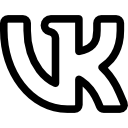1-92| Complete Guide A Test Bank Pharmacotherapeutics for Advanced Practice Nurses and Physician Assistants 2nd Edition Rosenthal Chapter 1 Prescriptive Authority Chapter 2 Rational Drug Selection and Prescription Writing Chapter 3 Promoting Positive Outcomes of Drug Therapy Chapter 4 Pharmacokinetics, Pharmacodynamics, and Drug Interactions Chapter 5 Adverse Drug Reactions and Medication Errors Chapter 6 Individual Variation in Drug Responses Chapter 7 Genetic and Genomic Considerations in Pharmacotherapeutics Chapter 8 Drug Therapy During Pregnancy and Breast-Feeding Chapter 9 Drug Therapy in Pediatric Patients Chapter 10 Drug Therapy in Geriatric Patients Chapter 11 Basic Principles of Neuropharmacology Chapter 12 Physiology of the Peripheral Nervous System Chapter 13 Muscarinic Agonists Chapter 14 Muscarinic Antagonists Chapter 15 Adrenergic Agonists Chapter 16 Adrenergic Antagonists Chapter 17 Indirect-Acting Antiadrenergic Agents Chapter 18 Introduction to Central Nervous System Pharmacology Chapter 19 Drugs for Parkinson Disease Chapter 20 Drugs for Alzheimer Disease Chapter 21 Drugs for Seizure Disorders Chapter 22 Drugs for Muscle Spasm and Spasticity Chapter 23 Local Anesthetics Chapter 24 Opioid Analgesics, Opioid Antagonists, and Nonopioid Centrally Acting Analgesics Chapter 25 Drugs for Headache Chapter 26 Antipsychotic Agents and Their Use in Schizophrenia Chapter 27 Antidepressants Chapter 28 Drugs for Bipolar Disorder Chapter 29 Sedative-Hypnotic Drugs Chapter 30 Management of Anxiety Disorders Chapter 31 Central Nervous System Stimulants and Attention-Deficit/Hyperactivity Disorder Chapter 32 Substance Use Disorders I: Basic Considerations Chapter 33 Substance Use Disorders II: Alcohol Chapter 34 Substance Use Disorders III: Nicotine and Smoking Chapter 35 Substance Use Disorders IV: Major Drugs of Abuse Other Than Alcohol and Nicotine Chapter 36 Review of Hemodynamics 37. Diuretics 38. Drugs Acting on the Renin-Angiotensin-Aldosterone System Chapter 39 Calcium Channel Blockers Chapter 40 Vasodilators Chapter 41 Drugs for Hypertension Chapter 42 Drugs for Heart Failure Chapter 43 Antidysrhythmic Drugs Chapter 44 Prophylaxis Atherosclerotic Cardiovascular Disease: Drugs Cholesterol TriglycerideLevels Chapter 45 Drugs for Angina Pectoris Chapter 46 Anticoagulant, Antiplatelet, and Thrombolytic Drugs Chapter 47 Drugs for Deficiency Anemias Chapter 48 Drugs for Diabetes Mellitus Chapter 49 Drugs for Thyroid Disorders Chapter 50 Estrogens and Progestins: Basic Pharmacology and Noncontraceptive Applications Chapter 51 Birth Control Chapter 52 Androgens Chapter 53 Drugs for Erectile Dysfunction and Benign Prostatic Hyperplasia Chapter 54 Review of the Immune System Chapter 55 Childhood Immunization Chapter 56 Antihistamines Chapter 57 Cyclooxygenase Inhibitors: Nonsteroidal Anti-inflammatory Drugs and Acetaminophen Chapter 58 Glucocorticoids in Nonendocrine Disorders 59. Drug Therapy of Rheumatoid Arthritis Chapter 60 Drug Therapy of Gout 61. Drugs Affecting CalciumLevels and Bone Mineralization Chapter 62 Drugs for Asthma and Chronic Obstructive Pulmonary Disease Chapter 63 Drugs for Allergic Rhinitis, Cough, and Colds Chapter 64 Drugs for Peptic Ulcer Disease Chapter 65 Laxatives Chapter 66 Other Gastrointestinal Drugs Chapter 67 Vitamins Chapter 68 Drugs for Weight Loss Chapter 69 Complementary and Alternative Therapies Chapter 70 Basic Principles of Antimicrobial Therapy Chapter 71 Drugsthat Weaken the Bacterial Cell Wall I: Penicillins Chapter 72 Drugsthat Weaken the Bacterial Cell Wall II: Other Drugs Chapter 73 Bacteriostatic Inhibitors of Protein Synthesis Chapter 74 Aminoglycosides: Bactericidal Inhibitors of Protein Synthesis Chapter 75 Sulfonamides and Trimethoprim Chapter 76 Drug Therapy of Urinary Tract Infections Chapter 77 Drugs Therapy for Tuberculosis Chapter 78 Miscellaneous Antibacterial Drugs Chapter 79 Antifungal Agents 80. Antiviral Agents I: Drugs for Non-HIV Viral Infections Chapter 81 Antiviral Agents II: Drugs for HIV Infection and Related Opportunistic Infections Chapter 82 Drug Therapy of Sexually Transmitted Diseases Chapter 83 Anthelmintics, Antiprotozoal Drugs, and Ectoparasiticides Chapter 84 Introduction to Immunomodulators Chapter 85 Supportive Care of Patients Receiving Anticancer Drugs Chapter 86 Drugs for Cancer Pain Chapter 87 Drugs for the Eye Chapter 88 Drugs for the Skin Chapter 89 Drugs for the Ear Chapter 90 Agents Affecting the Volume and Ion Content of Body Fluids Chapter 91 Management of ST-Elevation Myocardial Infarction Chapter 92 Additional Acute Care Drugs Chapter 1: Prescriptive Authority Test Bank Multiple Choice 1. An APRN works in a urology clinic under the supervision of a physician who does not restrict the types of medications the APRN is allowed to prescribe. State law does not require the APRN to practice under physician supervision. How would the APRN’s prescriptive authority be described? a. Full authority b. Independent c. Without limitation d. Limited authority ANS: B The APRN has independent prescriptive authority because the regulating body does not requirethat the APRN work under physician supervision. Full prescriptive authority gives the provider the right to prescribe independently and without limitation. Limited authority places restrictions on the types of drugsthat can be prescribed.DIF: CognitiveLevel: ComprehensionREF: p. 1TOP: Nursing Process: IMSC: NCLEX Client Needs Category: Physiologic Integrity: Pharmacologic and Parenteral Therapies 2. Which factors increase the need for APRNs to have full prescriptive authority? a. More patients will have access to health care. b. Enrollment in medical schools is predicted to decrease. c. Physician’s assistants are being utilized less often. d. APRN education is more complex than education for physicians. ANS: A Implementation of the Affordable Care Act has increased the number of individuals with health care coverage, and thus the number who have access to health care services. The increase in the number of patients creates the need for more providers with prescriptive authority. APRNs can fill this practice gap.DIF: Cognitive Level: ComprehensionREF: p. 2TOP: Nursing Process: Implementation MSC: NCLEX Client Needs Category: Physiologic Integrity: Pharmacologic andParenteral Therapies 3. Which factors could be attributed to limited prescriptive authority for APRNs? Select allthat apply. a. Inaccessibility of patient care b. Higher health care costs c. Higher quality medical treatment d. Improved collaborative care e. Enhanced health literacy ANS: A , B Limiting prescriptive authority for APRNs can create barriers to quality, affordable, and accessible patient care. It may also lead to poor collaboration among providers and higher health care costs. It would not directly impact patient’s health literacy.DIF: CognitiveLevel: ComprehensionREF: p. 2TOP: Nursing Process: Implementation MSC: NCLEX Client Needs Category: Physiologic Integrity: Pharmacologic and Parenteral Therapies 4. Which aspects support the APRN’s provision for full prescriptive authority? Select allthat apply. a. Clinical education includes prescription of medications and diseaseProcesses. b. Federal regulations support the provision of full authority for APRNs. c. National examinations provide validation of the APRN’s ability to provide safecare. d. Licensure ensures compliance with health care and safety standards. e. Limiting provision can decrease health care affordability. ANS: A , C , D APRNs are educated to practice and prescribe independently without supervision. National examinations validate the ability to provide safe and competent care. Licensure ensures compliance with standards to promote public health and safety. Limited prescriptive authority creates numerous barriers to quality, affordable, and accessible patient care.DIF: CognitiveLevel: ComprehensionREF: pp. 1-2TOP: Nursing Process: ImplementationMSC: NCLEX Client Needs Category: Physiologic Integrity: Pharmacologic andParenteral Therapies 5. Which aspects support the APRN’s provision for full prescriptive authority? Select allthat apply. a. Clinical education includes prescription of medications and diseaseProcesses. b. Federal regulations support the provision of full authority for APRNs. c. National examinations provide validation of the APRN’s ability to provide safecare. d. Licensure ensures compliance with health care and safety standards. ANS: A , C , D APRNs are educated to practice and prescribe independently without supervision. National examinations validate the ability to provide safe and competent care. Licensure ensures compliance with standards to promote public health and safety. Limited prescriptive authority creates numerous barriers to quality, affordable, and accessible patient care.DIF: CognitiveLevel: ComprehensionREF: pp. 1-2TOP: Nursing Process: Implementation MSC: NCLEX Client Needs Category: Physiologic Integrity: Pharmacologic andParenteral Therapies 6. A family nurse practitioner practicing in Maine is hired at a practice across state lines in Virginia.Which aspect of practice may change for the APRN? a. The APRN will have less prescriptive authority in the new position. b. The APRN will have more prescriptive authority in the new position. c. The APRN will have equal prescriptive authority in the newposition. d. The APRN’s authority will depend on federalregulations. ANS: A Virginia allows limited prescriptive authority, while Maine gives full authority to certified nurse practitioners. The federal government does not regulate prescriptive authority.DIF: CognitiveLevel: ComprehensionREF: p. 3TOP: NursingProcess: Implementation MSC: NCLEX Client Needs Category: Physiologic Integrity: Pharmacologic and Parenteral Therapies Rosenthal: Lehne's Pharmacotherapeutics for Advanced Practice Providers, 2nd Ed. Chapter 2: Rational Drug Selection and Prescription Writing Test Bank Multiple Choice 7. How can collaboration with a pharmacist improve positive outcomes for patients? Select allthat apply. a. Pharmacists can suggest foodsthat will help with the patient’s condition. b. Pharmacists have additional information on drug interactions. c. The pharmacist can suggest adequate medication dosing. d. Pharmacists have firsthand knowledge of the facility formulary. e. Pharmacy can alter prescriptions when necessary to prevent patient harm. ANS: B , C , D Providers should collaborate with pharmacists because they will likely have additional information on formulary, drug interactions, and suggestions for adequate medication dosing. Dietitians can make foods recommendations to treat the patient’s condition. The pharmacist can contact the prescriber about questionable prescriptions, but cannot alter the prescription without notification of and approval by the provider.DIF: CognitiveLevel: ComprehensionREF: p. 9TOP: NursingProcess: DiagnosisMSC: NCLEXClient Needs Category: Physiologic Integrity: Reduction ofRisk Potential 8. A patient presents with delirium tremens requiring Ativan administration. The provider of care is not in the facility.Which action by the nurse is most appropriate? a. Obtain a telephone order. b. Contact the on-call hospitalist. c. Obtain an order from the charge nurse. d. Wait for a written Ativan order. ANS: A In an emergency situation, such as delirium tremens with seizure activity, it is acceptable to provide a telephone order. Contacting the on-call hospitalist or waiting for a written order would take more time than available for a patient with high seizureRisk. Writing an order is outside the scope of practice for the charge nurse.DIF: CognitiveLevel: ApplicationREF: p. 7TOP: NursingProcess: ImplementationMSC: NCLEXClient Needs Category: Physiologic Integrity: Reduction ofRisk Potential 9. A patient with chronic pain calls the provider’s office to request a refill on their oxycontin.Which action is most appropriate? a. Fax an order to the pharmacy. b. Schedule an appointment with the patient. c. Verify the patient’s adherence to drug regimen. d. Determine the patient’s current medication dosage. ANS: B Schedule II medications are not eligible for refills, and prescriptions must be handwritten. It is important to verify the patient’s adherence to the drug regimen and determine the current dosage of medication; however, this can be accomplished by scheduling an appointment and evaluating the patient in person.DIF: CognitiveLevel: ApplicationREF: p. 8TOP: NursingProcess: ImplementationMSC: NCLEXClient Needs Category: Physiologic Integrity: Reduction ofRisk Potential 10. A patient prescribed amoxicillin for streptococcal pharyngitis reports new onset of a flat, itchy red rash on the chest and neck.Which action is most important? a. Provide a different prescription. b. Discontinue the medication. c. Prescribe an antihistamine cream. d. Assess for respiratory compromise. ANS: B The priority action is to discontinue the medication to prevent worsening of the patient’s symptoms. A different prescription would be provided, topical antihistamine may be administered, and the patient would be assessed for respiratory involvement, but these actions would not be performed first.DIF: CognitiveLevel: ApplicationREF: p. 6TOP: NursingProcess: ImplementationMSC: NCLEXClient Needs Category: Physiologic Integrity: Reduction ofRisk Potential 11. A patient taking three medications for hypertension is diagnosed with COPD.Which action should be taken prior to prescribing medications to treat COPD? a. Obtain baseline laboratory values. b. Obtain a complete medication history. c. Assess liver enzymeLevels. d. Determine if patient has insurance coverage. ANS: B Prior to adding medications to the treatment regimen, it is essential to assess for any potential drug- drug interactions through a complete medical history. Baseline laboratory values are not necessary for COPD treatment. Liver enzymeLevels may give insight into the possibility of altered metabolism but would not be the first action. The presence of insurance coverage would affect the patient’s access to treatment but may not affect the type of medication prescribed.DIF: CognitiveLevel: ApplicationREF: p. 6TOP: NursingProcess: ImplementationMSC: NCLEXClient Needs Category: Physiologic Integrity: Reduction ofRisk Potential 12. A patient with diabetes reports losing their job and an inability to purchase required medications.Which action is most appropriate? a. Provide a 7-day sample pack. b. Decrease the daily dose by half. c. Contact a different pharmacy. d. Prescribe a different medication. ANS: C Providing a 7-day sample will address the patient’s immediate need, but will not help with the patient’s long-term need for medication. Decreasing the daily dose will diminish the effectiveness of the medication. Selecting a different pharmacy could decrease the cost of the medication, as costs vary based on the location and the pharmacy dispensing the medication. Prescribing a different medication would be the last option.DIF: CognitiveLevel: ApplicationREF: p. 5TOP: NursingProcess: ImplementationMSC: NCLEXClient Needs Category: Physiologic Integrity: Reduction ofRisk Potential 13. A patient recently prescribed hydrocodone calls to report theyare unable to fill the prescription.Which factors could contribute to the inability to fill the prescription? Select allthat apply. a. DEA number missing from prescription b. Prescription sent via electronic messenger c. Dose higher than typically prescribed d. Prescriber license number not included e. Patient name and date of birth were handwritten ANS: A , B , D In order to fill a hydrocodone prescription, the prescriber name, license number, DEA number, and contact information must be included. Schedule II medications, such as narcotics, must be prescribed using written prescriptions. Though the pharmacist may question the high dosing,that would not prevent filling the prescription. The patient’s name and date of birth must be included on the prescription, but there are no regulationsthat the name cannot be handwritten.DIF: CognitiveLevel: ComprehensionREF: pp. 6-8TOP: NursingProcess: DiagnosisMSC: NCLEXClient Needs Category: Physiologic Integrity: Reduction ofRisk Potential Rosenthal: Lehne's Pharmacotherapeutics for Advanced Practice Providers, 2nd Ed. Chapter 3: Promoting Positive Outcomes of Drug Therapy Test Bank Multiple Choice 14. A patient reportsthat a medication prescribed for recurrent migraine headaches is not working.Which action should be taken first? a. Ask the patient about the number and frequency of tablets taken. b. Assess the patient’s headache pain on a scale from 1 to 10. c. Report the patient’s complaint to the prescriber. d. Suggest biofeedback as an adjunct to drug therapy. ANS: A When evaluating the effectiveness of a drug, it is important to determine whether the patient is using the drug as ordered. Asking the patient to tell the nurse how many tablets are taken and how often helps the nurse determine compliance. Assessing current pain does not yield information about how well the medication is working unless the patient is currently taking it. The nurse should gather as much information about compliance, symptoms, and drug effectiveness as possible before contacting the prescriber. Biofeedback may be an effective adjunct to treatment, but it should not be recommended without complete information about drug effectiveness.DIF: CognitiveLevel: ApplicationREF: pp. 15-16TOP: NursingProcess: EvaluationMSC: NCLEXClient Needs Category: Physiologic Integrity: Pharmacologic andParenteral Therapies 15. A patient is prescribed metronidazole for bacterial vaginosis.Which patient history finding would be most concerning? a. Recent yeast infection b. Family history of cervical cancer c. Drinks two glasses of wine every night d. Patient is currently unemployed ANS: C Patients taking metronidazole should be educated not to drink alcohol to prevent adverse reactions. It would be concerningthat the patient drinks wine daily. History of a yeast infection may indicate increasedRisk for recurrence with administration of an antimicrobial. A family history of cervical cancer is not related to administration of metronidazole. Unemployment can indicate lack of insurance coverage,Which may limit the patient’s ability to purchase medications, but is not the most concerning patient finding.DIF: CognitiveLevel: ApplicationREF: p. 12TOP: NursingProcess: ImplementationMSC: NCLEXClient Needs Category: Physiologic Integrity: Reduction ofRisk Potential 16. A patient is using a metered-dose inhaler containing albuterol for asthma. The medication label instructs the patient to administer “two puffs every 4 hours as needed for coughing or wheezing.” The patient reports feeling jittery sometimes when taking the medication, and she doesn’t feelthat the medication is always effective.Which action is most appropriate? a. Asking the patient to demonstrate use of the inhaler b. Assessing the patient’s exposure to tobacco smoke c. Auscultating lung sounds and obtaining vitalsigns d. Suggestingthat the patient use one puff to reduce side effects ANS: C Asking the patient to demonstrate inhaler use helps to evaluate the patient’s ability to administer the medication properly and is part of the nurse’s evaluation, but is not a priority intervention based on the patient’s current report. Assessing tobacco smoke exposure helps the nurse determine whether nondrug therapies, such as smoke avoidance, can be used as an adjunct to drug therapy, but does not relate to the patient’s current problem. Performing a physical assessment helps the nurse evaluate the patient’s response to the medication and identify the presence of other side effects.DIF: CognitiveLevel: ApplicationREF: p. 13TOP: NursingProcess: ImplementationMSC: NCLEXClient Needs Category: Physiologic Integrity: Pharmacologic andParenteral Therapies 17. A patient newly diagnosed with diabetes is to be discharged from the hospital.Which action should be taken first during medication education? a. Asking the patient to demonstrate how to measure and administer insulin b. Discussing methods of storing insulin and discarding syringes c. Giving information about how diet and exercise affect insulin requirements d. Teaching the patient about the long-term consequences of poor diabetes control ANS: A Because insulin must be given correctly to control symptoms and because an overdose can be fatal, it is most important for the patient to know how to administer it. Asking for a demonstration of technique is the best way to determine whether the patient has understood the teaching. When a patient is receiving a lot of new information, the information presented first is the most likely to be remembered. The other teaching points are important as well, but they are not as critical and can be taught later.DIF: CognitiveLevel: ApplicationREF: p. 11TOP: NursingProcess: PlanningMSC: NCLEXClient Needs Category: Physiologic Integrity: Reduction ofRisk Potential 18. The drug manual statesthat older adult patients are at increasedRisk for hepatic side effects.Which action is most important when prescribing this medication to an 80-year-old patient? a. Obtain pretreatment laboratory work. b. Ensurethat the drug is given in the correct dose at the correct time to minimize theRisk of adverse effects. c. Discontinue the order; the drug is contraindicated for this patient. d. Give the medication intravenously sothat the drug does not pass through the liver. ANS: A The drug manual indicatesthat this drug should be given with caution to elderly patients. Getting information about liver function before giving the drug establishes baseline datathat can be compared with post-treatment data to determine whether the drug is affecting the liver. Giving the correct dose at the correct interval helps to minimizeRisk, but without baseline information, the effects cannot be determined. The drug is not contraindicated.DIF: CognitiveLevel: AnalysisREF: p. 12TOP: NursingProcess: ImplementationMSC: NCLEXClient Needs Category: Physiologic Integrity: Reduction ofRisk Potential 19. A patient recently diagnosed with HIV is prescribed several medications to treat the condition.Which factors could impact the patient’s adherence to the treatment regimen? Select allthat apply. a. The patient is uninsured b. The patient works three part-time jobs c. The medication regimen includes six different pills d. Patient has an eighth-grade reading comprehensionLevel e. Medication regimen requires medication be taken at regular 4-hour intervals. ANS: A , B , C , E Lack of insurance coverage can inhibit the patient from purchasing the medications, limiting his access to treatment. Having three part-time jobs indicatesthat the patient has a busy schedule,Which contributes to forgetfulness and poor adherence. The more complex the medication regimen, the more difficult it is to maintain patient adherence. Although a patient with an eighth-grade reading comprehensionLevel may have difficulty understanding professional medical language, medication teaching can be adjusted to meet the patient’s learning needs.DIF: CognitiveLevel: ComprehensionREF: pp. 13-14TOP: NursingProcess: EvaluationMSC: NCLEXClient Needs Category: Physiologic Integrity: Reduction ofRisk Potential 20. A patient diagnosed with bipolar disorder is prescribed daily lithium.Which action is most important to determine if the therapeuticLevel is maintained? a. Obtain preadministration blood work. b. Administer medication at regular intervals. c. Ensure periodic laboratory testing is completed. d. Assess the patient for adverse effects. ANS: C Therapeutic serumLevels are determined through periodic laboratory testing. Preadministration blood work may be necessary to determine the patient’s physical condition but will not determine therapeuticLevels. Scheduling medication administration at regular intervals will help to ensure medication is absorbed and metabolized predictably, but will not determine therapeutic bloodLevels. Assessing the patient for physical signs of adverse effects does not determine if a therapeuticLevel has been obtained.DIF: CognitiveLevel: ApplicationREF: p. 12TOP: NursingProcess: EvaluationMSC: NCLEXClient Needs Category: Physiologic Integrity: Reduction ofRisk Potential Rosenthal: Lehne's Pharmacotherapeutics for Advanced Practice Providers, 2nd Ed. Chapter 4: Pharmacokinetics, Pharmacodynamics, and Drug Interactions Test Bank Multiple Choice 21. The nurse administers naloxone [Narcan] to a patient who has received a toxic dose of morphine sulfate. The nurse understandsthat the naloxone is effective because ofWhich action? a. Countering the effects of morphine sulfate by agonist actions b. Increasing the excretion of morphine sulfate by altering serum pH c. Preventing activation of opioid receptors through antagonist actions d. Regulating the sensitivity of opioid receptors by neurochemical alterations ANS: C Naloxone acts by blocking the action of opioids at opioid receptors. An opioid agonist would increase the effects of morphine. Naloxone does not affect serum pH or excretion of opioids. Naloxone does not alter the sensitivity of opioid receptors.DIF: CognitiveLevel: AnalysisREF: p. 31TOP: NursingProcess: ImplementationMSC: NCLEXClient Needs Category: Physiologic Integrity: Pharmacologic andParenteral Therapies 22. A patient is taking drug X and receives a new prescription for drug Y,Which is listed as an inducing agent. The nurse caring for this patient understandsthat this patient may require doses of drug . a. lower; X b. lower; Y c. higher; X d. higher; Y ANS: C An inducing agent stimulates the synthesis of CYP isoenzymes,Which may increase the metabolism of other drugs as much as two- to threefold, thereby lowering theLevel of those drugs in the body and requiring higher doses to maintain drug effectiveness.DIF: CognitiveLevel: ApplicationREF: p. 36TOP: NursingProcess: PlanningMSC: NCLEXClient Needs Category: Physiologic Integrity: Pharmacologic andParenteral Therapies 23. The nurse is preparing to administer penicillin G intramuscularly to a child. The child’sParents ask why the drug cannot be given in an oral liquid form. What is the nurse’s reply? a. “This drug causes severe gastric upset if given orally.” b. “This drug has a narrow therapeutic range, and the dose must be tightly controlled.” c. “This drug is absorbed much too quickly in an oral form.” d. “This drug would be inactivated by enzymes in the stomach.” ANS: D Penicillin G is inactivated by digestive enzymes in the stomach and cannot be given orally. It does not have a narrow therapeutic range.DIF: CognitiveLevel: ApplicationREF: p. 20TOP: NursingProcess: ImplementationMSC: NCLEXClient Needs Category: Physiologic Integrity: Pharmacologic andParenteral Therapies 24. Which statement about food and drug interactions is true? a. Foods alter drug absorption and metabolism but not drug action. b. Medications are best absorbed on an empty stomach. c. Patient discomfort is the food and drug interaction of most concern. d. Some foods can inhibit CYP isoenzymes and alter drug metabolism. ANS: D Grapefruit juice inhibits CYP3A4,Which lowers the metabolism of some drugs, leading to toxic effects of drugs affected by these isoenzymes. Foods can alter all pharmacokinetic and pharmacodynamicProcesses. Not all medications are absorbed better on an empty stomach; some require certain foods to enhance absorption. Patient comfort is a concern, but it is not as important as more severe and possibly life-threatening food and drug interactions.DIF: CognitiveLevel: AnalysisREF: p. 39TOP: NursingProcess: AssessmentMSC: NCLEXClient Needs Category: Physiologic Integrity: Reduction ofRisk Potential 25. A nurse is teaching a patient about a drugthat induces P-glycoprotein. The nurse will explainthat this drug may causeWhich effect on other drugs? a. Decreased absorption in the intestines b. Decreased elimination through the kidneys c. Increased brain exposure d. Increased fetal absorption ANS: B Drugsthat induce PGP can increase drug export from cells of the intestinal epithelium into the intestinal lumen, thus decreasing absorption of the drug. PGP inducers also increase drug elimination and decrease brain and fetal drug exposure.DIF: CognitiveLevel: AnalysisREF: p. 36TOP: NursingProcess: AssessmentMSC: NCLEXClient Needs Category: Physiologic Integrity: Pharmacologic andParenteral Therapies 26. A patient claims to get better effects with a tablet of Brand X of a drug than with a tablet of Brand Y of the same drug. Both brands contain the same amount of the active ingredient. What does the nurse know to be most likely? a. Advertising by pharmaceutical companies can enhance patient expectations ofone brand over another, leading to a placebo effect. b. Because the drug preparations are chemically equivalent, the effects of the two brands must be identical. c. Tablets can differ in composition and can have differing rates of disintegration and dissolution,Which can alter the drug’s effects in the body. d. The bioavailability of a drug is determined by the amount of the drug in eachdose. ANS: C Even if two brands of a drug are chemically equivalent (i.e., they have identical amounts of the same chemical compound), they can have different effects in the body if they differ in bioavailability. Tablets made by different manufacturers contain different binders and fillers,Which disintegrate and dissolve at different rates and affect the bioavailability of the drug. Two brands may be chemically equivalent and still differ in bioavailability,Which is not determined by the amount of drug in the dose.DIF: CognitiveLevel: ApplicationREF: p. 19TOP: NursingProcess: DiagnosisMSC: NCLEXClient Needs Category: Physiologic Integrity: Pharmacologic andParenteral Therapies 27. Two nurses are discussing theories of drug-receptor interaction.Which statements are true regarding the affinity of a drug and its receptor? Select allthat apply. a. Affinity and intrinsic activity are dependent properties. b. Affinity refers to the strength of the attraction between a drug and its receptor. c. Drugs with high affinity are strongly attracted to their receptors. d. Drugs with low affinity are strongly attracted to their receptors. e. The affinity of a drug for its receptors is reflected in its potency. ANS: B , C , E Affinity refers to the strength of the attraction between a drug and its receptor. Drugs with high affinity are strongly attracted to their receptors, and the affinity of a drug and its receptors is reflected in its potency. Affinity and intrinsic activity are independent properties. Drugs with low affinity are weakly attracted to their receptors.DIF: CognitiveLevel: ComprehensionREF: pp. 30- 31TOP: NursingProcess: DiagnosisMSC: NCLEXClient Needs Category: Physiologic Integrity: Pharmacologic andParenteral Therapies 28. A patient receives a drugthat has a narrow therapeutic range. The nurse administering this medication will expect to do what? a. Administer the drug at intervals longer than the drug half-life. b. Administer this medication intravenously. c. Monitor plasma drugLevels. d. Teach the patientthat maximum drug effects will occur within a short period. ANS: C A drug with a narrow therapeutic range is more difficult to administer safely, because the difference between the minimum effective concentration and the toxic concentration is small. Patients taking these medications must have their plasma drugLevels monitored closely to ensurethat they are getting an effective dosethat is not toxic. Administering medications at longer intervals only increases the time required to reach effective plasma drugLevels. Drugsthat have a narrow therapeutic range may be given by any route and do not differ from other medications in the amount of time it takes for them to take effect,Which is a function of a drug’s half-life and dosing frequency.DIF: CognitiveLevel: ApplicationREF: p. 25TOP: NursingProcess: EvaluationMSC: NCLEXClient Needs Category: Physiologic Integrity: Reduction ofRisk Potential 29. What occurs when a drug binds to a receptor in the body? a. It alters the receptor to become nonresponsive to its usual endogenous molecules. b. It increases or decreases the activity ofthat receptor. c. It gives the receptor a new function. d. It prevents the action of the receptor by altering its response to chemical mediators. ANS: B When a drug binds to a receptor, it mimics or blocks the actions of the usual endogenous regulatory molecules, either increasing or decreasing the rate of the physiologic activity normally controlled bythat receptor. It does not alter the activity of the receptor and does not give the receptor a new function.DIF: CognitiveLevel: AnalysisREF: p. 29TOP: NursingProcess: AssessmentMSC: NCLEXClient Needs Category: Physiologic Integrity: Pharmacologic andParenteral Therapies 30. A patient is receiving intravenous gentamicin. A serum drug test reveals toxicLevels. The dosing is correct, and this medication has been tolerated bythis patient in the past.Which could be a probable cause of the test result? a. A loading dose was not given. b. The drug was not completely dissolved in the IV solution. c. The patient is taking another medicationthat binds to serum albumin. d. The medication is being given at a frequencythat is longer than its half-life. ANS: C Gentamicin binds to albumin, but only weakly, and in the presence of another drugthat binds to albumin, it can rise to toxicLevels in blood serum. A loading dose increases the initial amount ofa drug and is used to bring drugLevels to the desired plateau more quickly. A drugthat is not completely dissolved carries aRisk of causing embolism. A drug given at a frequency longer than the drug half-life will likely be at subtherapeuticLevels and not at toxicLevels.DIF: CognitiveLevel: AnalysisREF: p. 21TOP: NursingProcess: EvaluationMSC: NCLEXClient Needs Category: Physiologic Integrity: Reduction ofRisk Potential 31. A patient reports becoming “immune” to a medication because it no longer works to alleviate symptoms. The nurse recognizesthat this decreased effectiveness is likely caused by: a. antagonists produced by the bodythat compete with the drug for receptor sites. b. decreased selectivity of receptor sites, resulting in a variety of effects. c. desensitization of receptor sites by continual exposure to the drug. d. synthesis of more receptor sites in response to the medication. ANS: C Continual exposure to an agonist would cause the cell to become less responsive or desensitized. The body does not produce antagonists as a response to a medication. Receptor site selectivity is determined by physiologic factors and not by the substancesthat bind to them. Medications do not cause more receptors to be produced.DIF: CognitiveLevel: AnalysisREF: p. 32-33TOP: NursingProcess: DiagnosisMSC: NCLEXClient Needs Category: Physiologic Integrity: Pharmacologic andParenteral Therapies 32. A patient who is taking morphine for pain asks the nurse how a pain medication can also cause constipation. What does the nurse know about morphine? a. It binds to different types of receptors in the body. b. It can cause constipation in toxic doses. c. It causes only one type of response, and the constipation is coincidental. d. It is selective to receptorsthat regulate more than one bodyProcess. ANS: D Morphine is a medicationthat is selective to receptor typethat regulates more than oneProcess. Because it is selective to receptor type, it does not bind to different types of receptors. Constipation is a normal side effect and is not significant for toxicity.DIF: CognitiveLevel: AnalysisREF: p. 35TOP: NursingProcess: ImplementationMSC: NCLEXClient Needs Category: Physiologic Integrity: Pharmacologic andParenteral Therapies 33. The nurse is administering morning medications. The nurse gives a patient multiple medications, two ofWhich compete for plasma albumin receptor sites. As a result of this concurrent administration, the nurse can anticipatethat what might occur? Select allthat apply. a. Binding of one or both agents will be reduced. b. PlasmaLevels of free drug willrise. c. PlasmaLevels of free drug will fall. d. The increase in free drug will intensify effects. e. The increase in bound drug will intensify effects. ANS: A , B , D When two drugs bind to the same site on plasma albumin, coadministration of those drugs produces competition for binding. As a result, binding of one or both agents is reduced, causing plasmaLevels of free drug to rise. The increase in free drug can intensify the effect, but it usually undergoes rapid elimination. The increase in plasmaLevels of free drug is rarely sustained.DIF: CognitiveLevel: AnalysisREF: p. 36TOP: NursingProcess: DiagnosisMSC: NCLEXClient Needs Category: Physiologic Integrity: Pharmacologic andParenteral Therapies 34. When administering medications to infants, it is important to rememberWhich of the following? Select allthat apply. a. Breast-feeding infants are more likely to develop toxicity when given lipid-solubledrugs. b. Immaturity of renal function in infancy causes infants to excrete drugs less efficiently. c. Infants have immature livers,Which slows drug metabolism. d. Infants are more sensitive to medicationsthat act on the central nervous system (CNS). e. Oral medications are contraindicated in infants, because PO administration requires a cooperative patient. ANS: B , C , D Immature renal function causes infants to excrete drugs more slowly, and infants are atRisk for toxicity until renal function is well developed. Infants’ livers are not completely developed, and they are less able to metabolize drugs efficiently. Because the blood-brain barrier is not well developed in infants, caution must be used when administering CNS drugs. Lipid-soluble drugs may be excreted in breast milk if the mother is taking them, but breastfeeding does not affect medications given directly to the infant. Oral medications may be given safely to infants as long as they are awake and can swallow the ....
No review has been posted for this item yet
 Cookies!
Cookies!









